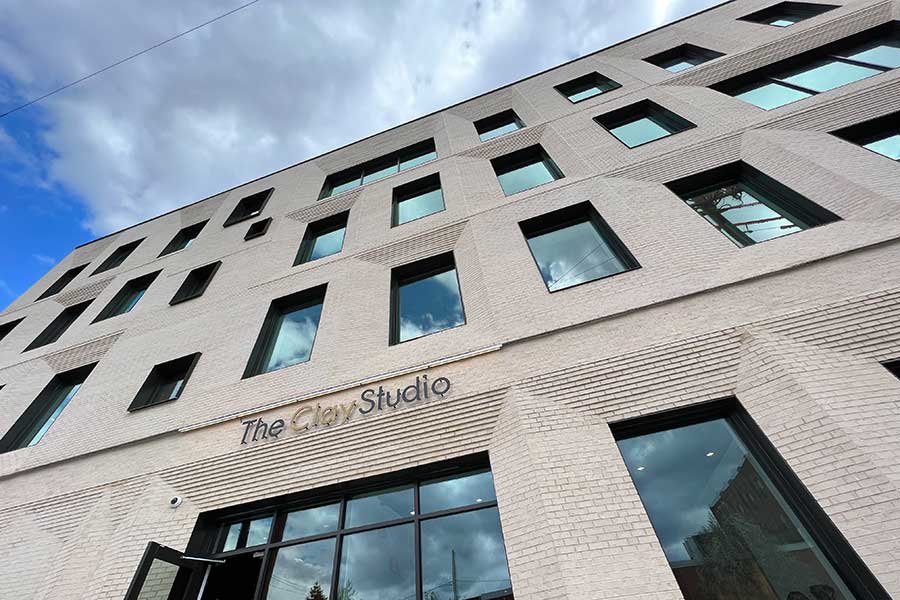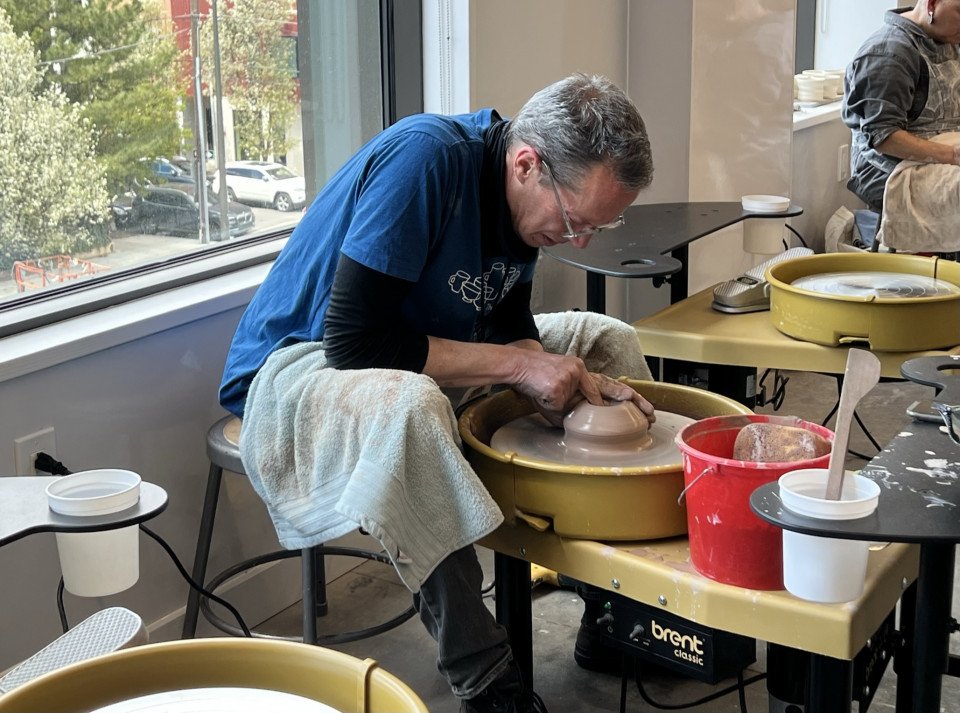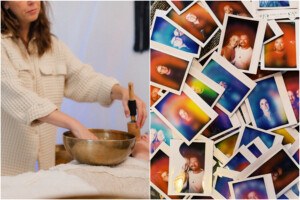A Look Inside The Clay Studio’s Massive New Space in South Kensington
The new four-story facility expands the organization's studio, classroom and gallery space — and its plans for community outreach.

The Clay Studio’s new South Kensington building. / Photography by Laura Swartz
The Clay Studio — the local non-profit focused on ceramic arts — has left the Old City building it has called home for over 30 years, beginning a new chapter in a brand new space as of April 9th. The 34,000-square foot, four-story facility in South Kensington greatly expands its studio, classroom, gallery, and event space — and with that, its ambitions.
Bordering Northern Liberties, The Clay Studio joins neighbors like NextFab and the Crane Arts building in what has become one of the most vibrant arts corridors in the city.

A ceramicist wheel-throwing.
The Clay Studio began its relationship with Kensington back in 1994, when it began to bring its pop-up Claymobile to surrounding schools and community centers. In the five years leading up to the move, the studio hosted conversations, workshops, and events within the South Kensington neighborhood to strengthen ties and get feedback about how it could best serve the people. “We know the transformative power of clay and look forward to sharing our love for the material and its creative possibilities with our neighbors,” says deputy director Josie Bockelman.
This spirit of collaboration and interconnectedness was on display at the open house this past Saturday, where community members were invited to tour the facility, meet the artists, and participate in art projects like crafting ceramic tiles for the walls of the building’s stairwell. Artists of all ages and abilities were able to make their mark on the new space, sharing the visceral experience of putting hands in clay.

Visitors made tiles for the walls of The Clay Studio’s new building on opening day.
Upstairs in a large classroom, kids and adults worked together on a collaborative sculpture, adorning a giant whale with little clay ornaments — everything from a smiling mermaid to a Liberty Bell. Elsewhere, resident artists and volunteers talked technique with visitors.

Visitors to The Clay Studio participate in collaborative sculpture.
The building’s first floor contains an art gallery, demonstration studio, shop, and an outdoor covered space that can host the Claymobile and other events. The second floor features five classrooms, including kiln rooms with 88 percent more kiln capacity than the Old City location had. The third floor has artist workspace and prototyping spaces, and the fourth floor tops off the building with offices and an open-air rooftop (another potential event space), which will soon have a retractable roof.

Classroom at The Clay Studio’s new South Kensington building.
Also on the fourth floor: a youth-oriented classroom, with adjustable tables and pottery wheels that allow teachers and students to work in tandem.
With so much more space comes opportunity for growth. The Clay Studio aims to expand its Resident Artists program to accommodate two visiting artists in addition to the current 12 residents. (Each resident and guest receives a studio space, materials, and studio support.)

The Clay Studio is planning summer camps, after-school programs, and other community outreach.
As for the larger public, The Clay Studio is planning to launch camps for kids ages 6 to 17 this summer, and a free after-school program for neighborhood elementary students in the fall. Also in the works: drop-in adult programs starting in June, and all-ages drop-in times hosted by resident artists on Saturday afternoons this fall. The annual Clay Fest will continue in September, and the studio plans to participate in Second Thursday open-studio events, welcoming the community to view gallery art and participate in hands-on activities.
The new facility was designed by DIGSAU, who took inspiration from Philadelphia’s early 20th-century warehouses, brickwork elements like raking and corbelling, and the city’s tradition of masonry construction. Jennifer Martin, executive director of The Clay Studio, sees the building’s design as representing “patchwork and multiple layers coming together. The multiple layers of the brickwork relate to the process of working in clay; building community is also about the process. We hope to develop layers of support and trust with our new community.”


